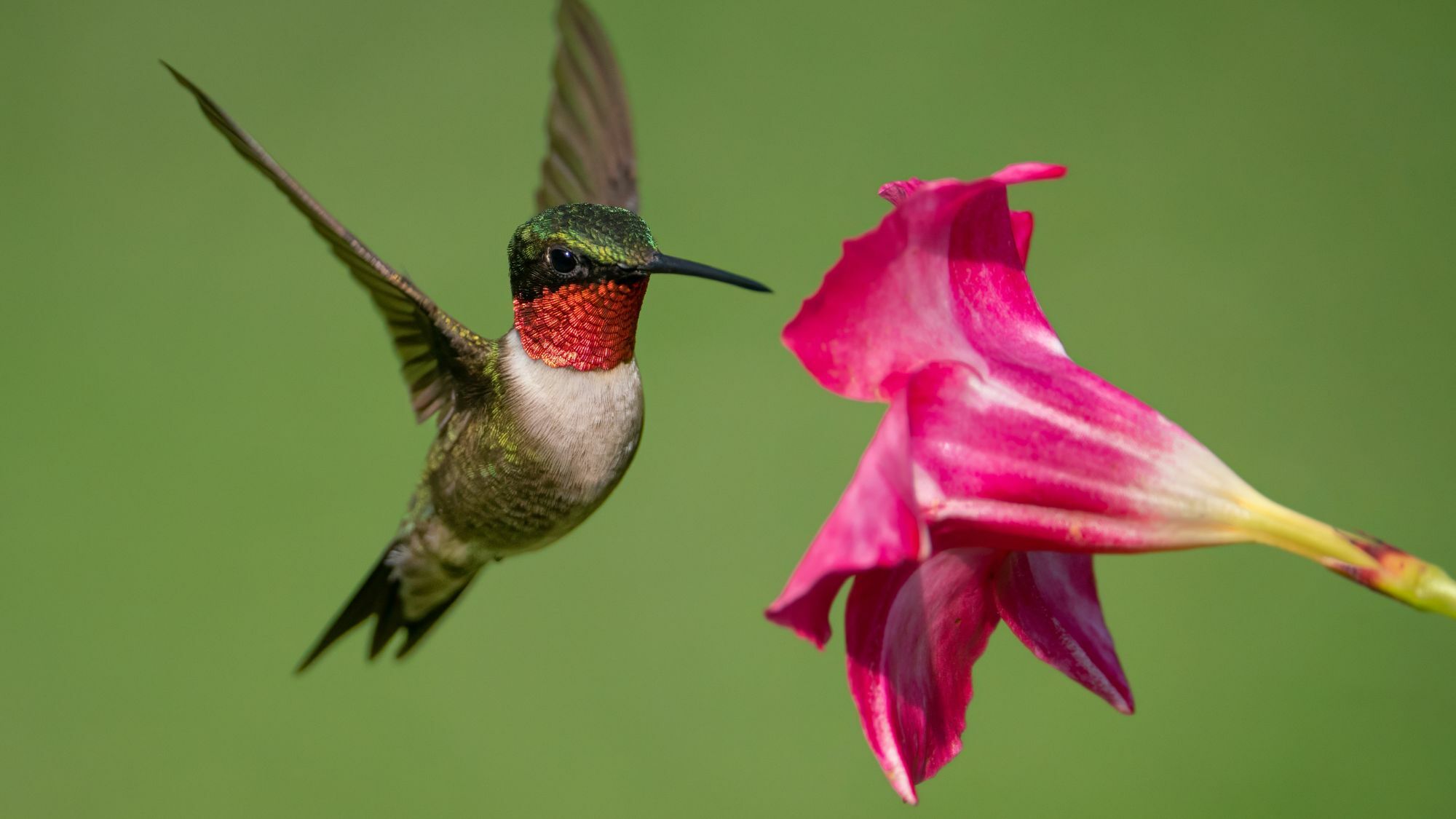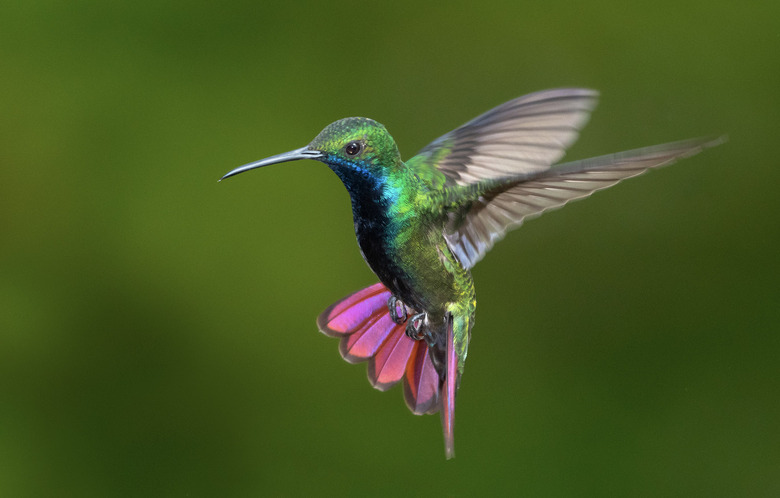Have you ever watched a hummingbird in action? Their rapid, darting movements can seem like a mesmerizing dance, leaving you wondering why they fly back and forth with such speed and agility.
You might find yourself captivated by their tiny, vibrant bodies and the way they hover, almost magically, in mid-air. But there’s more to these fascinating creatures than meets the eye. Hummingbirds’ unique flight patterns are not just a display of their incredible strength and precision—they’re a window into their survival tactics and feeding habits.
As you delve into the reasons behind their back-and-forth flight, you’ll uncover the secrets of their world and gain a newfound appreciation for these remarkable birds. So, let’s unravel the mystery behind why hummingbirds fly the way they do, and prepare to be amazed by what you discover.
Hummingbird Flight Patterns
Hummingbird flight patterns are fascinating to watch because they seem so deliberate yet unpredictable. These tiny birds move with incredible speed and precision, often darting back and forth in what appears to be a random dance. Understanding why they move this way can change how you see them during your next backyard visit.
Typical Movements In Nature
Hummingbirds don’t just fly randomly; their movements serve specific purposes. They hover to feed on nectar, dart quickly to avoid predators, and glide short distances when conserving energy. You might notice them zigzagging or pausing mid-air—each action helps them survive in a competitive environment.
Watching them closely, you’ll see how their wings beat rapidly—up to 80 times per second—allowing them to stay still in the air or move in any direction. This ability helps them access flowers that other birds can’t reach. Have you ever wondered how they manage to stay so stable while their wings blur?
Back And Forth Motion Explained
The back and forth motion is more than just a quirky behavior; it’s a survival strategy. Hummingbirds often move this way to check their surroundings for threats or rivals. This constant movement gives them a better view of their territory without needing to land.
Additionally, this motion helps them balance energy use. Instead of flying far to find food, they shuttle between flowers nearby. This minimizes energy spent on long flights and maximizes feeding efficiency. Next time you see a hummingbird moving back and forth, think about how it’s cleverly managing its energy and safety all at once.
Credit: medium.com
Energy And Feeding Habits
Understanding why hummingbirds fly back and forth takes a closer look at their energy and feeding habits. These tiny birds are constantly moving because their bodies demand a massive amount of fuel. Their unique feeding methods and rapid metabolism create a cycle of continuous motion that keeps them alive and thriving.
High Metabolism And Energy Needs
Hummingbirds have one of the fastest metabolisms in the animal kingdom. Their hearts beat up to 1,260 times per minute, and they can flap their wings up to 80 times per second. This intense activity burns energy quickly, so they need to eat almost constantly to keep up.
Have you ever felt like you need a snack every hour to keep going? Hummingbirds feel that way all the time. Without frequent feeding, their energy reserves would drop dangerously low, making their constant back-and-forth flights essential to find new food sources.
Nectar Feeding Strategies
Hummingbirds primarily feed on nectar, which is rich in sugar and provides a quick energy boost. However, nectar sources are spread out, so they must travel between flowers to collect enough fuel for their high-energy lifestyle.
These birds often follow a regular feeding route, visiting flowers in a pattern that maximizes their nectar intake while minimizing wasted energy. You might notice them hovering briefly at one flower before darting to the next—this behavior ensures they get fresh nectar and avoid competition.
- They spend just a few seconds per flower to avoid depleting the nectar.
- They return to the same flowers later when nectar has replenished.
- This back-and-forth motion supports efficient feeding and energy management.
Next time you watch a hummingbird, ask yourself: how do they know where to go? Their memory and feeding habits are finely tuned to keep their energy levels high. This constant movement is not random—it’s a survival strategy driven by their need for energy and the way they feed.
Territorial Behavior
Hummingbirds often fly back and forth to show strong territorial behavior. They protect their space to secure food and safety. This behavior helps them survive by keeping rivals away. Flying back and forth acts as a way to watch their area and warn others. It is a small bird’s way of saying, “This is mine.”
Defending Feeding Areas
Hummingbirds defend feeding areas rich in nectar. They guard flowers and feeders from other birds. This protection ensures enough food for themselves. Their quick, darting flights help chase off intruders. Staying close to food sources gives them energy to fly and stay active.
Warning Signals To Rivals
Flying back and forth sends clear warning signals to rivals. It shows strength and readiness to fight. Bright colors and fast movements add to the warning. This display keeps most rivals from entering their territory. It saves energy by avoiding actual fights but still protects their space.
Mating Displays
Hummingbirds often fly back and forth as part of their mating displays. These rapid movements catch the attention of potential mates and signal fitness. Understanding these behaviors can give you a closer look into their fascinating courtship rituals.
Attracting A Mate
Male hummingbirds use their flying skills to impress females. They perform quick, sharp movements to show off their strength and agility. These displays help females decide which male is the best choice for mating.
Have you ever noticed how some males hover and dart repeatedly near a flower or a perch? This is no accident; it’s a way to highlight their bright feathers and stamina. Your backyard feeder might be a perfect spot to observe this up close.
Flight Patterns In Courtship
Flight patterns in hummingbird courtship are often complex and highly choreographed. Males fly in loops, figure eights, or sudden dives to demonstrate their fitness. These patterns are not random but carefully controlled to impress females.
One common pattern is the “U-shaped dive,” where the male shoots upwards and then swoops down in front of a female. This daring move shows off speed and precision, qualities females look for in a mate.
Next time you see a hummingbird darting back and forth, ask yourself: Is this just movement, or a carefully planned display to win a mate’s attention? Watching closely can change how you see these tiny birds forever.
Navigation And Orientation
Hummingbirds move back and forth with great precision. Their navigation and orientation skills help them find food and avoid danger. These tiny birds use clever techniques to stay on course during flight. Understanding these methods reveals why they seem to dart endlessly in the air.
Using Landmarks
Hummingbirds recognize specific landmarks to guide their flights. Trees, flowers, and rocks act as visual cues. These points help birds remember where to find nectar. The landscape forms a mental map they follow. This map allows them to return to favorite feeding spots quickly.
Adjusting Flight Paths
Hummingbirds constantly change their flight paths to stay on track. They react to wind, obstacles, and other changes in their environment. Small course corrections keep them moving efficiently. This back-and-forth motion helps them explore new areas and avoid threats. It also improves their chances of finding food sources.

Credit: www.centredaily.com
Environmental Influences
Hummingbirds’ constant back-and-forth flight isn’t random; it’s deeply influenced by their environment. Their movement patterns respond directly to external factors that affect their survival and feeding efficiency. Understanding these environmental influences can help you appreciate how finely tuned these tiny birds are to their surroundings.
Weather Effects On Flight
Weather plays a huge role in how hummingbirds fly. On windy days, you might notice them darting more cautiously, adjusting their speed and direction to maintain balance.
Rain can slow them down or send them seeking shelter. You’ve probably seen them hover closer to flowers during calm, sunny periods—perfect conditions for feeding.
Temperature also matters. When it’s cooler, hummingbirds conserve energy by minimizing unnecessary movement. Have you ever wondered why they seem more active at dawn and dusk? It’s because moderate temperatures and calm air make flying easier and safer.
Adaptations To Habitat
Hummingbirds adapt their flight based on the landscape they live in. In dense forests, their back-and-forth movement helps them navigate tight spaces and avoid predators.
Open areas require different strategies; they might fly longer distances between flowers and adjust their wing beats to conserve energy. Your backyard feeder might attract more visits if it mimics the natural habitat with a variety of flowers placed at different heights.
These birds also learn local patterns of flower blooming and adjust their flight routes accordingly. Next time you see a hummingbird zigzagging, think about how it’s mapping its territory to get the most nectar with the least effort.

Credit: owlcation.com
Frequently Asked Questions
Why Do Hummingbirds Fly Back And Forth Rapidly?
Hummingbirds fly back and forth to stabilize their position while feeding. This movement helps them hover precisely near flowers. It also aids in quick escape from predators and efficient energy use during flight.
How Does Back-and-forth Flight Benefit Hummingbirds?
This flight pattern allows hummingbirds to maintain balance and control. It helps them access nectar from flowers at various angles. The movement also supports their high metabolism by enabling quick, efficient feeding.
Do Hummingbirds Fly Back And Forth To Communicate?
Yes, hummingbirds use flight patterns for communication. Rapid back-and-forth flights can signal territorial behavior or mating displays. These movements help them interact with other hummingbirds and establish dominance.
Is Back-and-forth Flying Unique To Hummingbirds?
Hummingbirds are among the few birds capable of true hovering with back-and-forth flight. This ability is rare and linked to their specialized wing muscles and unique flight mechanics. It allows precise movement unmatched by most birds.
Conclusion
Hummingbirds fly back and forth to stay balanced and find food. This movement helps them hover and see flowers clearly. They also use it to watch for danger nearby. Their quick flying saves energy and keeps them safe. Watching this small bird’s dance shows how smart nature can be.
Next time you see a hummingbird, remember why it moves like that. It’s a small wonder of the bird world. Simple actions, big reasons. Nature’s little flyer in constant motion.

